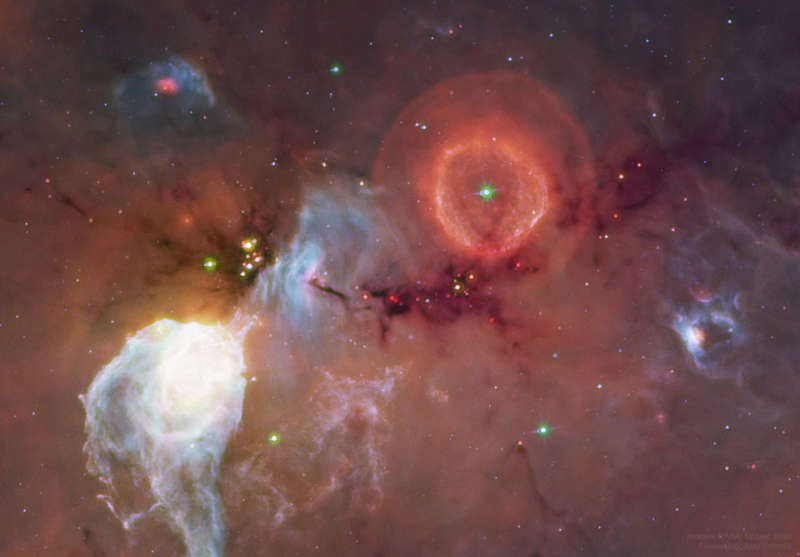Explanation: Stars this volatile are quite rare. Captured in the midst of dust clouds and visible to the right and above center is massive G79.29+0.46, one of less than 100 luminous blue variable stars (LBVs) currently known in our Galaxy. LBVs expel shells of gas and may lose even the mass of Jupiter over 100 years. The star, itself bright and blue, is shrouded in dust and so not seen in visible light. The dying star appears green and surrounded by red shells, though, in this mapped-color infrared picture combining images from NASA's Spitzer Space Observatory and NASA's Wide-Field Infrared Survey Explorer. G79.29+0.46 is located in the star-forming Cygnus X region of our Galaxy. Why G79.29+0.46 is so volatile, how long it will remain in the LBV phase, and when it will explode in a supernova is not known.
Free Download:
The 2018 APOD Calendar
1999 2000 2001 2002 2003 2004 2005 2006 2007 2008 2009 2010 2011 2012 2013 2014 2015 2016 2017 2018 2019 2020 2021 2022 2023 2024 2025 |
Yanvar' Fevral' Mart Aprel' Mai Iyun' Iyul' Avgust Sentyabr' Oktyabr' Noyabr' Dekabr' |
NASA Web Site Statements, Warnings, and Disclaimers
NASA Official: Jay Norris. Specific rights apply.
A service of: LHEA at NASA / GSFC
& Michigan Tech. U.
|
Publikacii s klyuchevymi slovami:
star - zvezdy - obolochki zvezd
Publikacii so slovami: star - zvezdy - obolochki zvezd | |
Sm. takzhe:
Vse publikacii na tu zhe temu >> | |
